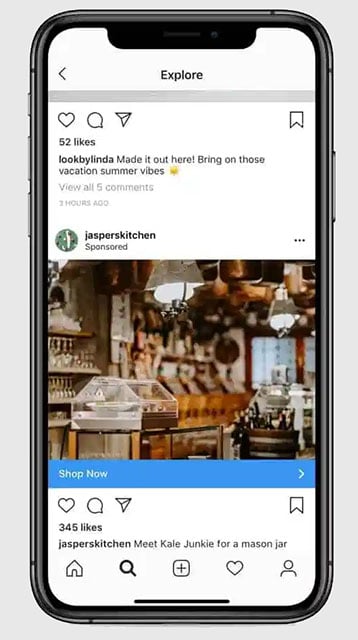The Inevitable Convergence of Social Media, Commerce, and Visual Content
![]()
You walk through the supermarket aisle until you face various choices for the product you wish to eat. In the case of cereals, it can be 20 or more different options. You reach out and pick one, which you feel is the right decision based on a well-educated process.

Traditionally, the two have been geographically and historically separated. You receive marketing messages at breakfast while reading your daily digest on your phone, and you will be buying in the late afternoon.
Ecommerce, for most of its brief existence, has followed the same schema. Advertising here, shopping there. But not anymore. Everything is converging to one all-encompassing moment of truth at one place and one time, with visual content at its core. The customer journey is now reduced to an instant and one visual.
There are three main steps in a customer journey:
- The awareness of the product
- The consideration of the product
- The purchase of the product
Up to now, they all happened at different places and over time. Now, it’s all converging at one place and time and all within one visual content.
Nowhere can this be experienced more than on social media since we spent most of our time. All platform owe their success and operate with visual content as their core interface. Stage one was to use those visuals to capture audiences. Stage 2 two was to transform those views into advertising; stage three adds a “buy” button: Discovery, conversion, purchase, now all in one image or video.
Instagram displays an ad every 3 to 4 posts and uses retargeting profusely. Each ad contains multiple visuals introducing a product you have shown interest in and leading to a shop now button. That one image or video contains the whole customer journey.

The numbers confirm the story: 81% of people out of over 1 billion use Instagram every month to help research products and services. With an average conversion rate of 1.85 percent, that’s 14 million clicks on a “buy” button of an image every month.
Identical scenario for Facebook, Pinterest, Twitter, and Snap. Photography has a new role, one much harder to master. It has to introduce, convince, and sell all within one frame. It has to capitalize on the instant attention span. With video, it’s an identical challenge, all within the maximum of 60 seconds granted by most social media platforms. For brands, the bar is making the brutal journey feel seamless, which is why they rely on influencers’ expertise. They have mastered converting content into captive audiences and come with built-in trust. All that is needed is the “buy” button.
The product now comes to you, fully packaged with all the information you might need to make a purchase decision, including the cash register. Everything is transformed into an impulse buy, one carefully vetted via retargeting by your shown interest. All compressed in one frame or 60-second video, right next to those party pix of last night shared by you BFF.
Shop and share. The lines are blurred. Your friends, brands, product, purchase, parties are all part of the same flow. Click Like here, click buy there; who is that at my front door? A delivery or a friend? The beginning and end of your buyer journey are all in here, in one frame.
About the author: Paul Melcher is a photography and technology entrepreneur based in New York, and the founder of Kaptur, a news magazine about the visual tech space. The opinions expressed in this article are solely those of the author. You can find more of his writings on his blog, Thoughts of a Bohemian. Melcher offers his services as a consultant as well. This article was also published here.
Image credits: Stock photos licensed from Depositphotos